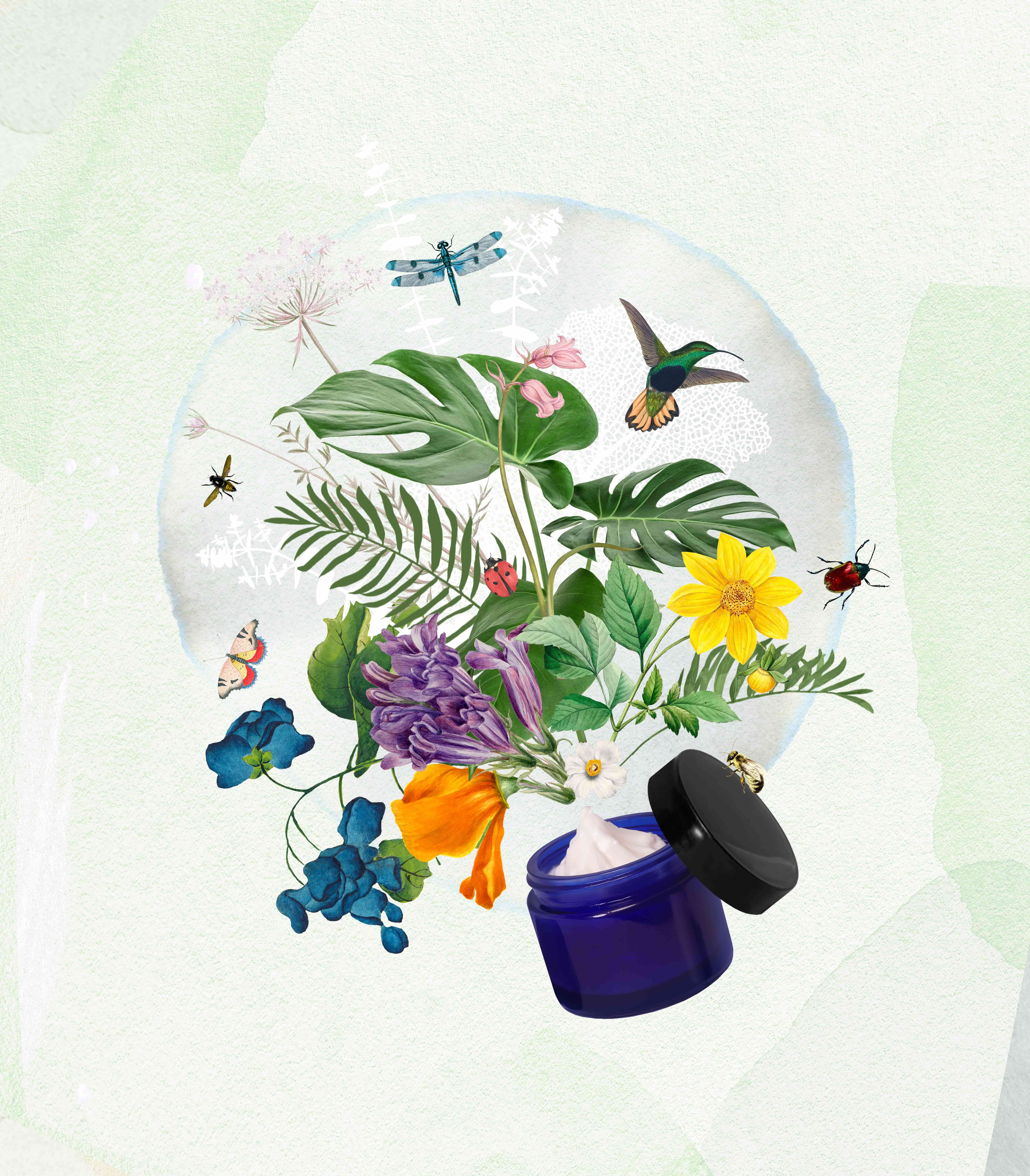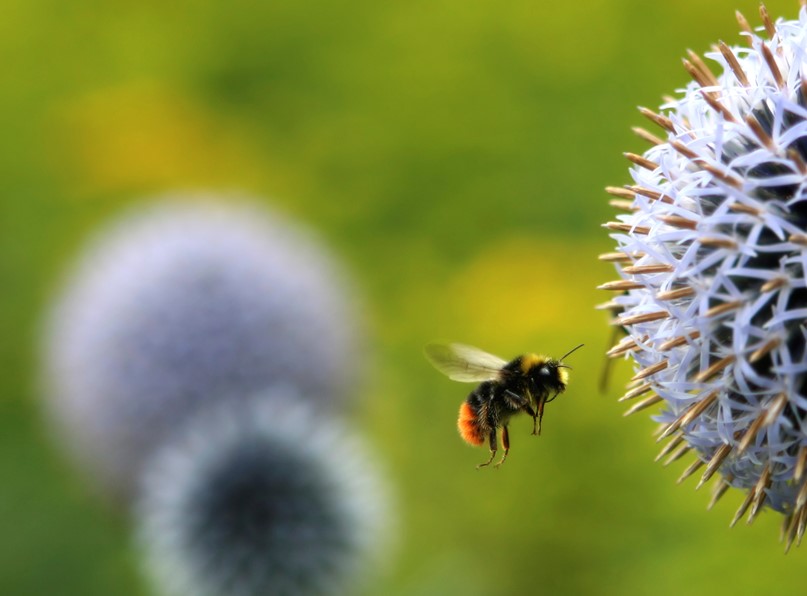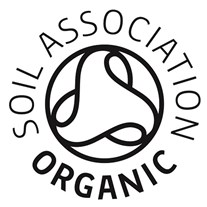
- Soil Association
- Take action
- Organic living
- Organic beauty & wellbeing
- Why choose organic beauty?

What are the benefits of using organic beauty and wellbeing products?
Choose certified organic products and benefit people, planet and wildlife.
Read on to find out how certified organic products:
- minimise harm to the environment
- benefit wildlife
- avoid controversial chemicals
- support cruelty-free beauty and wellbeing
Organic health and beauty standards – better for the planet:
The ingredients in certified organic health and beauty products are grown on organic farms.
Organic farming is all about working with nature. It makes use of what’s to hand and limits the amount of imported resources. The result? Healthy soils, reduced risk of pollution from chemicals, and on average, less energy use too.
Key reasons why COSMOS-certified organic products are better for the planet:
Responsible production of palm oil:
Palm oil is allowed in organic health and beauty products. But, certain specified ingredients must be from organic origin or certified sustainable by RSPO (Roundtable on Sustainable Palm Oil).
Many organic manufacturers choose not to use palm oil in their products. COSMOS organic standards do support the responsible production of palm oil. It must be on existing agricultural land where it is appropriate to do so.
The responsible production of palm oil can support sustainable livelihoods in tropical countries. Palm oil is a really versatile and productive crop. COSMOS believe that the organic and natural cosmetics industry should take responsibility for the sourcing of palm oil and palm kernel oil. That way, we can better ensure minimal impact to the environment.
What’s the difference between RSPO and organic?
At the moment, there are only a small number of companies producing organic palm oil worldwide. Many of these growers are pioneers in sustainable production. They must meet strict organic standards. These control the use of harmful inputs and destructive deforestation. These producers also tend to work closely with smallholders and communities. This has positive social, environmental and economic impacts.
COSMOS would prefer all ingredients from palm and palm derivatives from organic sources. At present, this is not possible due to availability. As such, COSMOS standards currently also permit palm products from RSPO certified sources. These standards ensure certified palm oil producers:
- protect, conserve and enhance ecosystems and the environment
- behave legally, ethically and transparently
- respect human rights and the rights of local communities and smallholders
Recyclable packaging:
Packaging is a big part of organic health and beauty standards. Businesses must have a plan to reduce the environmental impact of their packaging, throughout a product’s life cycle. COSMOS standards require minimal packaging with maximum recycled and recyclable content. It has a list of accepted and banned materials to help guide companies' decisions.

Responsible manufacturing process:
Organic standards also consider the waste produced at the manufacturing stage. Businesses must have an environmental management plan in place. This must ensure as much waste as possible is reduced, reused or recycled. Non-toxic and biodegradable cleaning products must not be used at the manufacturing site.
No artificial fertilisers are used in organic agriculture:
- Healthier soils: Soil is a really important tool in the fight against climate change. There’s currently 2.5 billion tonnes of carbon stored in soil around the world! Taking good care of soil is at the heart of organic farming. Organic soils can become up to 25% more effective at storing carbon from the atmosphere.
- Protection for vulnerable plants: Organic standards take care to protect any endangered plant species. Ingredients sourced for organic products must respect the requirements of the Convention of International Trade in Endangered Species of Wild Fauna and Flora (CITES).
- Green Chemistry: COSMOS organic standards are based on the principle of green chemistry. This applies throughout the manufacture and life cycle of a product. Green chemistry means working to avoid the use of toxic and non-bio-degradable substances.
Organic beauty and wellbeing – better for wildlife:
Did you know that, organic farms have on average 30% more biodiversity. The role these nature-friendly farms can play in restoring wildlife populations is vital.
The reason why organic farms are such havens for wildlife include:
- Fewer pesticides: Pesticides are one of the major drivers of insect decline, particularly pollinators, like bees. Pesticide use in organic farming only happens as a last resort, and under very restricted circumstances. Instead, farmers must create a balanced ecosystem on their farms. Pests are controlled through natural means.
- Nature-friendly habitats: For every 10 percent increase in bee-friendly habitats - like that found on organic farms - bee numbers and diversity increases by over a third. Organic farming is a form of agroecology – which means working with nature to farm your crops. As a result, organic farms are much more likely to have nature-friendly habitats on their land. Habitats like hedges, trees, beetle banks and wild areas, allow nature to thrive.
- Cleaner water for wildlife: Nitrogen fertilisers used in conventional farming can create ‘dead zones’. This happens when fertilisers run off fields and into waterways. This reduces the amount of oxygen in rivers and seas. This nitrogen pollution can kill fish and other aquatic life. Organic standards ban the use of these manufactured fertilisers.

Organic beauty standards ban the use of controversial chemicals
Organic standards follow the 'precautionary principle'. When there is scientific evidence that an ingredient, technology or process might pose a health or environmental risk, they will not be allowed.
Many controversial chemicals often found in health and beauty products are not allowed in certified organic products. These include parabens and phthalates, and synthetic colourings, dyes or fragrances.
And testing on animals is not allowed...
Testing beauty and wellbeing ingredients or products on animals isn't allowed under the COSMOS standards.
The only animal products permitted in COSMOS organic products are ones that are naturally produced by them. Products such as milk, honey and beeswax. No ingredients extracted from living or dead animals are allowed.
-
Keen to take action now you know the benefits of organic?
Make a difference for nature and the planet today. Show your support for some incredible certified organic companies!
See our certified brands

